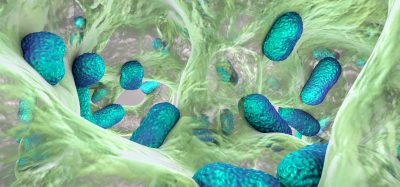Antimicrobial resistance with Recce Pharmaceuticals
Posted: 16 November 2023 | Taylor Mixides (Drug Target Review) | No comments yet
In this exclusive interview, Drug Target Review’s Taylor Mixides interviews James Graham, CEO of Recce Pharmaceuticals, they explore the company’s approach to combat the growing global threat of antimicrobial resistance (AMR). Recce Pharmaceuticals is at the forefront of developing a new class of synthetic anti-infectives with a unique mechanism of action. Graham discusses the distinctive features of their lead anti-infective candidate, RECCE® 327 (R327), its mechanism of action, potential therapeutic applications, ongoing preclinical trials, and the company’s commitment to expanding its pipeline to address the need for effective antibiotics.

What is the thesis underlying Recce Pharmaceutical’s approach?
Our approach is to combat the increasing global health threat posed by antimicrobial resistance (AMR) by advancing a new class of synthetic anti-infectives with a unique mechanism of action. AMR results from the overuse of antimicrobials, contributing to the development of multi-drug resistant bacterial species, often referred to as superbugs.
AMR results from the overuse of antimicrobials, contributing to the development of multi-drug resistant bacterial species, often referred to as superbugs.
There is a substantial need for new therapies to treat drug-resistant infections without contributing to or perpetuating resistance; therefore, we are committed to developing highly effective treatment solutions that can be used against a broad range of bacterial infections.
How do Recce Pharmaceuticals’ synthetic anti-infectives differ from current therapies on the market aiming to combat the urgent global health threat posed by antimicrobial resistance (AMR)?
There has been no new class of antibiotic in over 30 years. A common issue associated with traditional antibiotics is that they target specific bacterial structures or functions to fight infections but are often overcome by mechanisms of bacterial resistance. Our lead anti-infective candidate, RECCE® 327 (R327), utilises a multi-modal approach to fight infections. R327, in part, disrupts the integrity of the bacterial cell membrane and has demonstrated sustained antimicrobial activity. R327’s universal multi-layered mechanism of action kills bacteria and keeps on killing with repeated use, including their multi-drug resistant superbug forms.
Can you discuss the R327’s mechanism of action and what indications the drug could offer therapeutic benefits to?
R327 uses a novel mechanism targeting the energetics of the bacterial cell, enabling rapid cell death. R327 is designed for the treatment of serious and potentially life-threatening infections due to both Gram-positive and Gram-negative bacteria, including their multi-drug resistant superbug forms. These include burn wound infections, diabetic foot infections, urinary tract infections, sepsis, and urosepsis.
Tell us about Recce’s ongoing preclinical trials?
We are currently conducting preclinical trials to evaluate R327’s effectiveness against Mycobacteroides abscessus (M. abscessus) and bacterial sinusitis to determine its safety profile before progressing the compound into clinical trials. M. abscessus is a species of rapidly growing, multi-drug resistant, nontuberculous mycobacteria (NTM) that commonly causes chronic lung infection and skin and soft tissue infection. Bacterial sinusitis is a mild infection of the tissue lining the sinuses and is usually treated in an outpatient setting. While most cases resolve with treatment, in rare cases, bacterial sinusitis can lead to severe complications and death.
Could you offer additional information about potential applications for R327 that extend beyond the previously mentioned therapeutic areas?
There is significant potential for R327 to be applied across various bacterial infections that have grown resistant to current therapies. We look forward to progressing our preclinical and clinical programs and advancing into additional indications as we work to address the historic lack of innovation in antibiotic drug development and the increasing need for effective antibiotics.
Are there any plans to expand your pipeline beyond R327?
We are dedicated to expanding our pipeline beyond R327. While we have two additional candidates, R435, an orally administered therapy for bacterial infections, and R529, a new synthetic polymer formulation developed for viral indications.
While we have two additional candidates, R435, an orally administered therapy for bacterial infections, and R529, a new synthetic polymer formulation developed for viral indications.
It is important to always explore new opportunities for our pre-clinical with the end-goal in mind to create a robust pipeline of synthetic anti-infectives to address a wide range of infections. We are committed to revolutionizing the traditional approach to medicine and remain at the forefront of fighting AMR and improving global health.
About the author
 James Graham
James Graham
CEO of Recce Pharmaceuticals
James Graham is the Chief Executive Officer of Recce Pharmaceuticals. He was formerly Executive Director and has extensive experience in marketing, business development and commercialisation of early-stage technologies with global potential. James has served on Recce’s Board of Directors for six years and has invested in almost every capital raise to date with a focus on expanding Recce’s commercial opportunities and clinical initiatives.
Related topics
Antibiotics, Antimicrobials
Related conditions
Antibiotics
Related organisations
Recce Pharmaceuticals
Related people
James Graham (Recce Pharmaceuticals)






